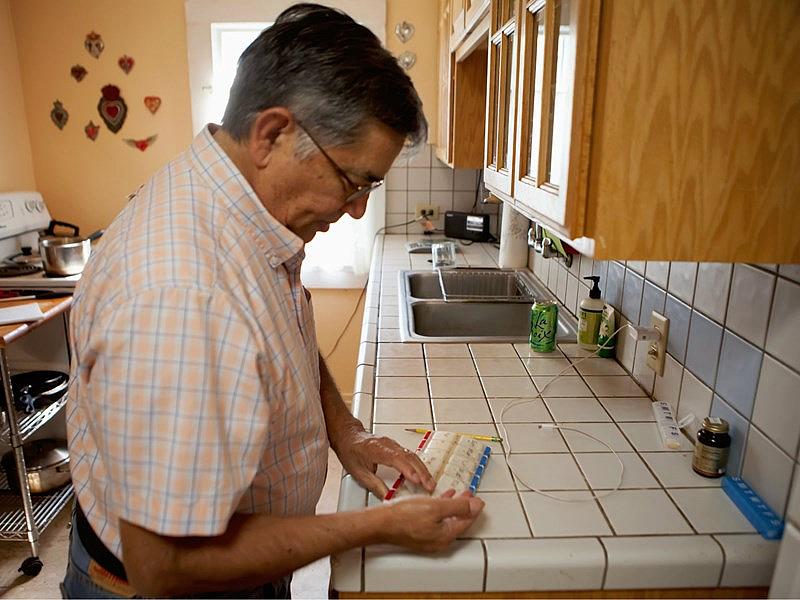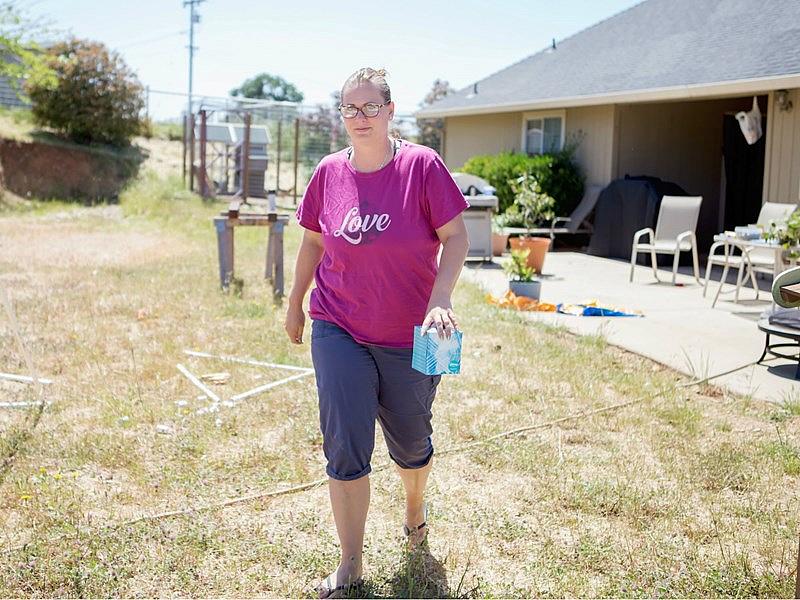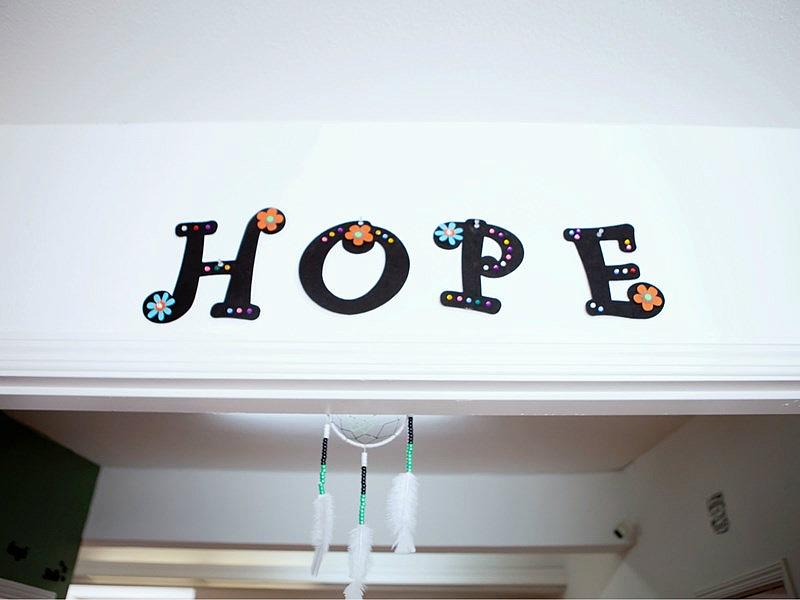Preventing Suicide, One Conversation At A Time
This story was produced as a project for the 2018 California Fellowship, a program of the Center for Health Journalism at USC Annenberg.
Other stories in this series include:
Q&A: How CapRadio Found Data On Suicides In Amador County
CapRadio Healthcare Reporter Examines Rural Suicide In Amador County
Why Veterans Face Heightened Suicide Risk in Amador County and Other Rural Areas
Where are the psychiatrists? Amador County and rural California hit hardest by physician shortage
How Suicide Trainings, Community Connections Could Patch Holes In Amador’s Mental Health Safety Net
Dying To Get Out: Stigma, ‘Copycat Effect’ Drive Youth Suicide In Rural Amador County
Chronic Loneliness Is A Major Cause Of Suicide For Seniors, Especially in Rural California
The ‘S’ Word: How Suicide Is Devastating Amador County And Rural Communities

Tim Whalen, with Veterans Affairs, speaks with Amador County resident Mel Welsh about the shortage of behavioral health options for vets. (Photo: Vanessa S. Nelson / Capital Public Radio)
This project started with a small seed of an idea, planted by CapRadio Managing Editor Linnea Edmeier, who has lived in Sutter Creek for most of her life. She had noticed people dying by suicide often, but had never heard anyone discuss it at length. She proposed a project to find out if people who live in Amador County are at heightened risk for suicide, and whether leaders there were do anything to solve it.
The answer to both questions is yes. According to the latest rankings from the California Department of Public Health, Amador ranks third-highest in the state for suicide deaths per 100,000 people. It falls behind Sierra and Mariposa, and is clustered among many other small, rural counties. Data from the Amador County health department shows that men, middle aged people, and veterans are most likely to take their own lives. National research also shows that teens are at heightened risk.
There are many reasons for the high rate: poverty, a shortage of mental health providers, geographic isolation, access to firearms, a lack of funding for public services, and a stigma around suicide. We learned all this by reaching out to people who live and work in Amador County. Through letters in the local newspaper, radio appearances and an on-the-ground event, we were able to connect with a wide range of people who have lost a loved one to suicide or been on the verge of it themselves.
Many of them are committed to finding solutions they hope will safeguard their community from these preventable deaths. Amador is a tight-knit place where people stay closely involved in each other’s lives. Mental health has historically been the exception: until now.
Change starts with conversation. When people bottle up their distress, it can build and bubble to the point where suicide seems like the only option. When they share their struggles with loved ones, or hear a stranger talk about their journey to recovery, they feel more hopeful and less alone. And when residents listen to neighbors' experiences, it breaks down stereotypes and reduces stigma.
That’s why we’ve created this Conversation Kit. It’s designed to help you bring friends, neighbors and family members together to talk about suicide in rural communities. The kit contains audio clips and discussion questions on a range of topics related to mental health – from challenges to solutions. You can also visit our project page where you’ll find longer stories, which you can play and build a discussion around. We hope this kit contributes to rural community leaders’ on-going efforts to prevent suicide.
Thank you,
Sammy Caiola, health care reporter
jesikah maria ross, community engagement strategist
Capital Public Radio team
GETTING STARTED
Take a look at the topics below and consider which you’d like to discuss with your group. Then listen to audio clips and decide which you’d like to play to spark the conversation. You can use the discussion questions provided or create your own!
You may want to invite a guest speaker to help introduce the topic, why it’s important, and answer questions that come up (see our resource page for list of local organizations). All you’ll need is access to the internet to play or download the audio clips. If you’ll be playing the clips for a group larger than 5 people, you’ll probably want to use a pair of plug-in speakers.
BEFORE THE GATHERING
Every conversation is different. You’ll want to consider:
- How will this conversation support your (or your organization’s) goals?
- Who are you inviting and what topics are they interested in?
- How much time do you have for the conversation?
- Are there local experts you’d like to have participate?
- Do you want to provide any takeaway resources?
- Can you host this conversation as part of an organizational or community meeting?
Image

Andy Rodriguez has learned to manage his bipolar disorder, and says he's living a happier and more stable life now than he was a few years ago. (Photo: Vanessa S. Nelson / Capital Public Radio)

Andy Rodriguez has learned to manage his bipolar disorder, and says he's living a happier and more stable life now than he was a few years ago. (Photo: Vanessa S. Nelson / Capital Public Radio)
HOSTING THE CONVERSATION
Playing and discussing stories about mental health can generate a range of opinions, experiences and emotions. To create a space where everyone feels comfortable, you may want to establish some ground rules. Here are some examples, but feel free to work the group to create your own.
- Show mutual respect and kindness. We are here to make our community a better and healthier place for everyone.
- Use “one mic” which means when one person is talking, give them your attention by not interrupting. Listen attentively.
- Don’t debate with, correct or embellish someone else’s experience.
- We’ll keep what’s said in the room confidential to encourage honest discussion.
CONVERSATION TOPICS
Understanding Mental Illness
About half of suicides nationally occur among people with a diagnosed mental illness. We talked to a handful of Amador County residents who live with depression, anxiety, bipolar disorder and PTSD. Here’s how they describe it:
It’s My Fault: People who are depressed often blame themselves.
Feeling Judged: Sometimes anxiety can make even simple tasks seem overwhelming.
Dark Thoughts: Often, others deny you have a problem.
Silent Struggle: Looking good on the outside, suffering on the inside.
Discussion Questions
- What stood out to you about those stories?
- What life challenges cause neighbors to consider taking their own life?
- Thinking about a time that you were depressed, what beliefs, emotions and events contributed to the challenge you faced?
- How do you “protect yourself from getting in a slump?”
- Have you ever faced a crisis of hope? How did you get through it?
- What community resources are available for neighbors to get help?
Stigma
Many residents say there’s a sense of shame around mental health in rural places that makes people reluctant to ask for help. Some people deny that mental health challenges are a real problem, though major medical organizations estimate one in four people are affected. These attitudes make it unlikely that people who are struggling will seek services.
Seeing the Signs: Parents sometimes overlook the signs of depression.
Get Over It: If you admit you’re struggling, people tell you to tough it out.
Stereotypes: Some people think being on medication for mental illness is a sign of weakness.
Don’t Discuss: In some cultures, mental illness is brushed under the rug.
Denial: People may not understand that living with mental illness is a journey.
Afraid to Talk: Many residents keep their mental illnesses a secret from friends and family.
Close Knit: In a small town, people worry that word of their mental health issues will spread quickly.
Heather Saxton lives in Fiddletown, California, far away from services and social activities. Isolation can be a major suicide risk in rural areas. (Photo: Vanessa S. Nelson / Capital Public Radio)
Discussion Questions
- What caught your attention in those stories?
- What are the “signs of depression, anxiety, or other mental illness”?
- What are some misconceptions you hear about mental health in your community? What negative or derogatory terms are used?
- If you were/are struggling with a mental illness, who would/do you talk to?
- Do you think mental health is a personal or a community problem? Why?
- How might your community change the way people talk and think about mental health?
Isolation and Loneliness
Many seniors in Amador County live alone, faraway from services. Experts say loneliness should be viewed as a chronic health issue, and a major suicide risk. About one third of people who killed themselves in Amador County between 2010 and 2017 were over age 60.
Feeling Alone: Older people limited by mobility are at unique risk for depression.
Staying Connected: Going days without human contact can lead to suicidal thoughts, but meditation can help.
Friends Can Help: A psychologist explains the health benefits of having a companion.
Cut Off: The lack of public transit in rural areas contributes to high suicide rates.
Less Social Support: Older adults in rural areas have it worse now than they used to.
Discussion Questions
- What themes came up those stories? What else stood out to you?
- How do those stories relate to the experiences you or your friends have had?
- What do these stories tell us about living in rural communities today?
- What do you do to feel less isolated or lonely? What advice would you give to others?
- What can we do to help our rural neighbors cope with depression?
- What resources are available to help seniors stay involved in community life
Being a Teen
Hormones, family conflict, school stress and other issues put youth at added risk for suicide. Research shows teens in rural areas are twice as likely as teens in cities to follow through with suicidal thoughts due to stigma, a lack of services and access to firearms.
Not Lazy: Poor school performance may be due to a mental illness, not a lack of motivation.
Guilt Trip: A teen describes the pressure of growing up in a small town.
Kept Quiet: One teacher says adults should be talking to kids about suicide.
It took Ashley Moore months to find a therapist after her breakdown a few years ago. Amador County, like many rural areas, has few mental health professionals. (Photo: Vanessa S. Nelson / Capital Public Radio)
Discussion Questions
- What did you hear in those stories that resonated for you?
- Has anyone had a similar experience to the folks in those stories? What happened?
- What do think leads young people to consider taking their own lives?
- Who do you trust to go to when you are feeling depressed, or having thoughts of suicide?
- What advice would you offer to youth who are dealing with mental health challenges?
- What knowledge or skills do parents need to help their children who are struggling? Where can they go to get these resources?
- What is your school doing well that helps students feel deal with depression and suicide?
- What could your school do better to help students cope with mental health challenges?
Doctors and Services Needed
Like many rural areas, Amador County lacks therapists, psychologists and psychiatrists. It places another barrier between struggling residents and professional help.
What’s Lacking: An Amador County Supervisor says services are only available to some residents.
Not Enough Resources: It's hard to get healthcare professionals to live and work in rural areas.
Leaving Town for Help: Many residents travel long distances to get the psychiatric support they need.
No Space: A local ER physician says it’s a challenge to care for people in suicidal crisis.
Discussion Questions
- What struck you in these stories?
- What are creative solutions for helping people access care?
- How far would you (or do you) travel to get mental health services?
- How would you like to see your county use its mental health funding to improve access to resources?
- How can we inspire young people to pursue careers in mental health?
Veterans
National statistics show veterans are about 20 percent more likely than people who have never served in the military to die by suicide. It has to do with trauma from combat, and a reluctance to ask for help.
Combat Effects: Veterans past experience can put them at higher risk for suicide.
Asking for Help: People with military history often believe asking for help is a sign of weakness.
Getting Support: This vet put off getting mental health care for years, but got a second chance when he found a room at a local nonprofit.

Community members are speaking up in hope of changing the conversation about suicide in Amador County. (Photo: Vanessa S. Nelson / Capital Public Radio)
Discussion Questions
- How do those stories relate to the experiences you or your neighbors have had?
- Has anyone had a similar experience to the people in the stories?
- What do you think leads veterans to take their own life?
- Who do you trust to go to when you are feeling depressed, or having thoughts of suicide?
- What kind of support do veterans need in their communities? Where can they find those resources?
Changing the Conversation
Mental health leaders in Amador County want to change the conversation around suicide and encourage people to seek out help. They’re launching awareness events, and training law enforcement and community members on spotting the signs of suicide. And residents are sharing stories and speaking up.
Peer Support: Having people who have experienced a mental health challenge share their story is is one way to encourage people to find treatment.
Stigma Free Community: This county behavioral health worker says people respond better to messages about mental health challenges that come from their friends and neighbors.
Be Brave: One resident with depression encourages people to speak up.
Fighting Back: Mental illness doesn’t go away, but you can learn to live with it.
Make It There: This resident fights off suicidal thoughts by making positive goals for the future.
Reaching Out: Social media can help seniors reconnect with family and friends.
Discussion Questions
- How do you see the connection between mental health and suicide?
- Do you think mental health is a personal or a community problem?
- Is suicide preventable? If so, how?
- What kind of support do people need to stay safe? Where can they find this support?
- What strategies have you used to “learn to live” with mental illness?
- What can we do to become a “stigma-free-community.”

